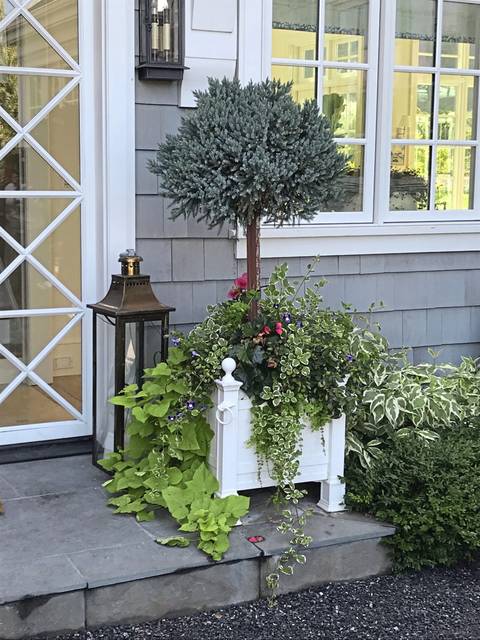Grafting useful for making unique plant forms
Grafting is a centuries-old craft in which a person takes pieces from two or more different plants and grafts them together so they grow as one plant. The grafting process is performed because it brings multiple positive traits from separate plants into a single plant. It’s a technique that can be used to create plants with improved disease resistance and hardiness, increased yields or unique physical forms, such as topiaries, standards, weeping branches and compact growth habits.
Though there are many different types of grafting, in its simplest form, grafting attaches the shoot system (the scion) of one plant to the root system (the rootstock) of a separate plant. The two are grafted together in a fairly simple procedure, and once the graft union has healed, the two plants grow as one. In most cases, the scion and rootstock must be from the same species (or, sometimes, the same family) in order for them to be compatible with each other and for the graft union to be successful. In other words, you can’t graft a juniper with an oak tree. But, you can graft an apricot with a peach tree because they’re in the same stone-fruit family.
Nurserymen and women sometimes use grafting to create dwarf or compact plants by selecting and using a specific root stock with dwarfing traits. Then, they graft the shoot system of a full-sized compatible variety of that plant on top of the root stock. The dwarfing trait in the rootstock is then transferred to the shoot system, yielding dwarf fruit trees, some types of dwarf evergreens, or other compact plants.
Grafting is quite common among fruit and ornamental trees, especially those with unique or specialized forms. For example, many weeping trees are created by grafting a pendulous shoot system onto a straight-trunked variety of the same plant, and some Japanese maples and fruit trees may be grafted onto different rootstocks in order to improve their winter hardiness. Novelty pom-pom bushes are often created through grafting as well.
Another way grafting is used is to make “standards.” A “standard” is a particular artificially created form of a plant — typically a shrub or a woody sub-shrub — where the shoot system is perched atop a section of tall, straight stem. “Standards” look like lollipop plants. Rose and evergreen standards are most common, but you’ll sometimes come across heliotrope, plumbago and even hydrangea standards. Standards are made by grafting a section of tall, straight stem onto the root system (making it an inter-stock). Then, on top of that straight stem is grafted a portion of a regular shoot system. The plant is then pruned and trained to form a ball on top of the straight stem (see photo).
Grafting is useful only for the generation of plants on which it was performed. The improvements or dwarfing traits made through grafting are not carried to the next generation via saved seeds or even by taking cuttings of the plant. It’s just for a single generation. Still, grafting can create some pretty unique plants with desirable traits for the gardener.
Horticulturist Jessica Walliser is the author of several gardening books, including "Attracting Beneficial Bugs to Your Garden," "Good Bug, Bad Bug," and her newest title, "Container Gardening Complete." Her website is jessicawalliser.com. Send your gardening or landscaping questions to tribliving@tribweb.com or The Good Earth, 622 Cabin Hill Drive, Greensburg, PA 15601.
Remove the ads from your TribLIVE reading experience but still support the journalists who create the content with TribLIVE Ad-Free.

